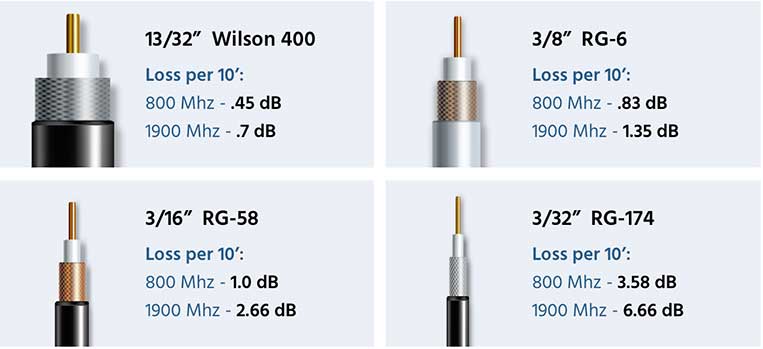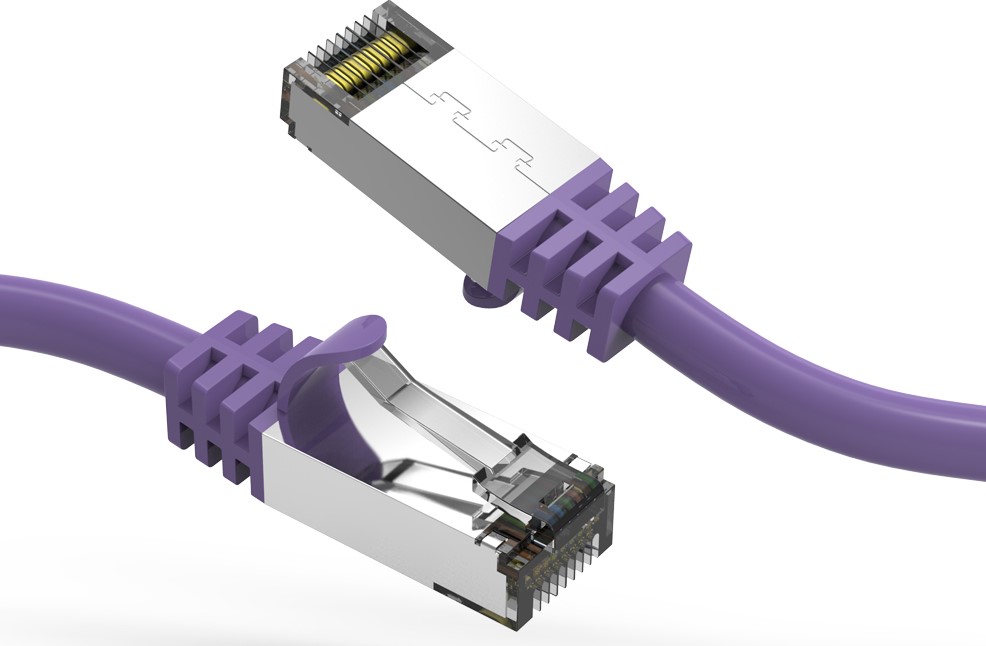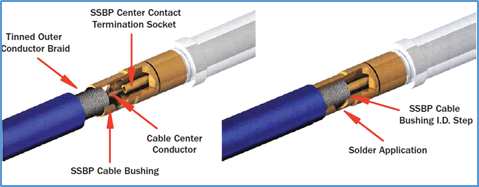As a seasoned cable industry professional with over a decade of hands-on experience, I’ve witnessed firsthand the critical role that choosing the right coaxial cable plays in ensuring optimal signal transmission. In this comprehensive guide, I’ll share my expertise on RG11 coaxial cable – a true powerhouse in the world of cable technology. Whether you’re a veteran technician or just beginning to explore cable options, this article will equip you with the knowledge to make informed decisions about RG11 cable for your projects.
Introduction: The Significance of RG11
RG11 coaxial cable stands as a heavyweight champion in the cable world, engineered for applications where signal quality over long distances is paramount. Having installed countless miles of cable throughout my career, I can attest that RG11 often outperforms its smaller cousins like RG6 when it comes to minimizing signal loss.

The “RG” in RG11 stands for “Radio Guide,” a designation dating back to World War II when the U.S. military standardized cable specifications. Today, RG11 has evolved into a versatile solution for various high-performance applications, from long-distance CATV runs to complex CCTV installations.
Technical Specifications: The Numbers Behind the Performance
Let’s dive into the technical details that make RG11 stand out:
- Impedance: 75 ohms, ideal for video and broadband internet applications
- Capacitance: Typically around 67 pF/m (picofarads per meter)
- Attenuation: Significantly lower than RG6, especially at higher frequencies
- Maximum frequency: Can handle frequencies up to 3 GHz effectively
- Velocity of propagation: Approximately 85%, allowing for faster signal travel
To put this into perspective, I once worked on a project where we needed to run a cable nearly 1000 feet for a rural internet installation. RG6 simply couldn’t cut it at that distance, but RG11 delivered a strong, clear signal to the customer’s home, showcasing its superior long-distance capabilities.
Construction Details: Building a Better Cable
The superior performance of RG11 comes down to its robust construction. Here’s what’s inside:
- Inner conductor: Typically copper-clad steel or solid copper, 14 AWG (about 1.63mm diameter)
- Dielectric: Foam polyethylene, providing excellent insulation
- Shielding: Multiple layers, often including aluminum foil and copper braid
- Outer jacket: Usually PVC or LSZH (Low Smoke Zero Halogen) for durability and safety
This construction makes RG11 particularly resilient in harsh environments. On one memorable installation in a coastal area, the salt air quickly corroded cheaper cables, but the RG11 lines held strong for years, demonstrating their durability in challenging conditions.
Uses and Applications: Where RG11 Shines
RG11’s capabilities make it ideal for various applications:
- CATV and satellite TV distribution: Excellent for long runs in large buildings or campuses
- Broadband internet: Delivers high-speed connections over greater distances
- Security camera systems: Ensures clear video transmission in large-scale CCTV setups
- Radio communications: Used in both amateur and professional radio installations
- Industrial control systems: Provides reliable signal transmission in noisy environments
In my experience, RG11 really proves its worth in commercial and industrial settings. I once helped design a network for a sprawling manufacturing facility where RG11’s low signal loss was crucial for maintaining connectivity across the entire plant, spanning several acres.
Advantages and Disadvantages: Weighing the Pros and Cons
Like any technology, RG11 has its strengths and limitations:
Advantages:
- Lower signal attenuation over long distances
- Higher bandwidth capacity
- Better shielding against interference
- More durable construction for outdoor use
Disadvantages:
- Higher cost compared to smaller coaxial cables
- Thicker and less flexible, making installation more challenging
- Overkill for short runs or basic residential applications
I always remind clients that while RG11 is powerful, it’s not always necessary. For a standard home cable TV setup, the extra cost and installation difficulty of RG11 often outweigh the benefits. It’s crucial to assess your specific needs before opting for this high-performance cable.
RG11 vs. Other Coaxial Cables: A Comparison
To better understand RG11’s place in the coaxial cable family, let’s compare it to some other common types:
- RG11 vs. RG6:
- RG11 has lower signal loss over long distances
- RG6 is more flexible and easier to install in tight spaces
- RG11 is better suited for commercial applications, while RG6 is standard for residential use
- RG11 vs. RG59:
- RG11 has significantly lower attenuation, especially at higher frequencies
- RG59 is thinner and more flexible, but limited in its applications
- RG11 is preferred for long-distance runs, while RG59 is often used for short, low-frequency applications
- RG11 vs. RG8:
- RG11 is designed for 75-ohm systems, while RG8 is for 50-ohm systems
- RG11 is typically used in video and broadband applications, while RG8 is common in amateur radio
Understanding these differences is crucial when selecting the right cable for your specific application. In my years of experience, I’ve seen many projects where choosing the wrong cable type led to suboptimal performance and unnecessary costs.
Installation Tips: Getting the Most from Your RG11
Based on my years in the field, here are some key tips for installing RG11:
- Use proper connectors: Always use high-quality connectors designed specifically for RG11. Mismatched connectors can negate the cable’s benefits.
- Mind the bend radius: RG11 is less flexible than smaller cables. Respect its minimum bend radius (typically about 4.5 inches) to avoid damaging the cable.
- Plan your route carefully: Due to its size, RG11 requires more space in conduits and cable trays. Plan your installation path accordingly.
- Consider weatherproofing: For outdoor installations, use weatherproof connectors and consider additional protective measures like drip loops.
- Test thoroughly: Always test your installation with appropriate equipment to ensure signal quality meets specifications.
I once saw a botched installation where an inexperienced technician kinked an RG11 cable while pulling it through a tight space. The damaged section caused significant signal issues, requiring a costly repair. Proper planning and careful handling are crucial to avoid such pitfalls.
Real-world Examples and Scenarios
To illustrate RG11’s capabilities, let me share a couple of real-world scenarios I’ve encountered:
- Large-scale CCTV deployment: For a shopping mall security upgrade, we used RG11 to connect high-definition cameras across the property. The cable’s low signal loss ensured crystal-clear video feeds from even the farthest corners of the parking lots.
- Rural broadband expansion: In a project to bring high-speed internet to a remote area, RG11 allowed us to run cables from a central distribution point to homes up to 1000 feet away without needing signal amplifiers.
- University campus network: When upgrading a university’s cable TV system, RG11 backbone lines allowed us to distribute high-quality signals to multiple buildings from a single headend, simplifying the overall system design.
Future Trends and Innovations in Coaxial Technology
While RG11 has been a staple in the industry for decades, it’s important to look at how coaxial technology is evolving:
- Higher frequencies: As demand for bandwidth increases, we’re seeing developments in coaxial cables capable of handling even higher frequencies.
- Improved shielding: Innovations in shielding technology are making coaxial cables more resistant to interference, crucial in our increasingly wireless world.
- Integration with fiber optics: Hybrid systems that combine the strengths of coaxial and fiber optic cables are becoming more common, especially in large-scale deployments.
- Smart cables: There’s ongoing research into “smart” coaxial cables that can self-diagnose issues and report performance data.
As someone who’s passionate about staying at the forefront of cable technology, I find these developments exciting and full of potential for future applications.
Conclusion: Is RG11 Right for Your Project?
RG11 coaxial cable is a powerful tool in the cable technician’s arsenal, offering superior performance for long-distance and high-bandwidth applications. Its robust construction and excellent signal characteristics make it ideal for commercial, industrial, and specialized residential installations where signal quality is paramount.
However, it’s essential to weigh the benefits against the higher cost and installation challenges. For many standard residential applications, RG6 or even RG59 might be more appropriate choices.
As with any technical decision, the key is to assess your specific needs carefully. Consider factors like distance, required bandwidth, environmental conditions, and budget when deciding if RG11 is the right choice for your project.
Remember, in the world of cable technology, bigger isn’t always better – but when you need the power and performance that RG11 offers, it’s hard to beat. Whether you’re designing a large-scale CCTV system, expanding rural broadband access, or tackling any other high-performance cabling challenge, RG11 could be the solution you’re looking for.
By understanding the capabilities and limitations of RG11 coaxial cable, you’re better equipped to make informed decisions that will ensure the success of your cabling projects. As technology continues to evolve, staying informed about the latest developments in cable technology will be crucial for professionals in our field.






0